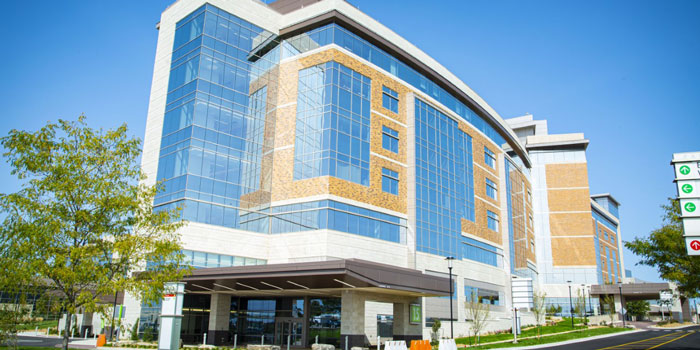Parkview Regional Medical Center Opens Final Unit Of New Medical Tower

Pictured is the South Tower exterior at Parkview Regional Medical Center. Photo provided by PRMC.
News Release
FORT WAYNE — Parkview Regional Medical Center has opened the final unit of its new medical tower, marking an end to the hospital expansion project that increased its capacity by a total of 142 inpatient beds.
Construction for the new medical tower, also known as the South Tower, began in May 2018 to accommodate the regions growing demand for inpatient and ambulatory care. Due to the COVID-19 pandemic, construction was expedited, and the South Towers first inpatient beds opened on the sixth floor in August 2020.
During the pandemic, Parkview Health also added inpatient beds at its other hospitals, including nearby Parkview Hospital Randallia and Parkview DeKalb Hospital, to accommodate the increase in demand for care. With the newest 22-bed unit opening at PRMC, the health system has expanded its total inpatient capacity by more than 250 beds in just over two years. To care for the community, Parkview hospitals also committed to avoiding diversion, which is when a hospital temporarily turns away ambulances or emergency patients.
“When the decision was made to build the South Tower, no one could have anticipated the emergent need for additional capacity due to the COVID-19 pandemic,” said John Bowen, president, PRMC and Affiliates. “Largely because of the South Tower, Parkview was able to care for more than two-thirds of the COVID-19 patients in our region, never go on diversion and always say yes when patients needed care. Without PRMCs additional capacity, the pandemic would have looked remarkably different.”
The 168,000-square-foot South Tower has a total of six patient floors and a lower level. The lower level includes a maintenance area and co-worker entrance. The first floor features the newest unit, 1 South, which is a 22-bed progressive level unit, as well as the hospitals emergency department. Floors two though six of the South Tower are all 24-bed inpatient units.
All units in PRMCs two medical towers were built with a patient-centered design, including private rooms and an abundance of natural light to create a healing environment. The rooms can also be easily converted to accommodate different levels of care, a feature that is especially beneficial to capacity management.
”We continuously managed inpatient capacity during the COVID-19 pandemic by converting our units and adding, for example, more ICU beds as needed,” Bowen said. ”We have responded similarly to the recent increase in respiratory illnesses. Though we have adequate capacity thanks to our expansions, we will continue to make adjustments as needed to ensure our community has access to quality care.

Pictured is the South Tower exterior. Photo provided by PRMC.

Pictured is a room in the newly finished 22-bed progressive level unit, 1 South. Photo provided by PRMC.

Pictured is a hallway in unit 1 South. Photo provided by PRMC.
